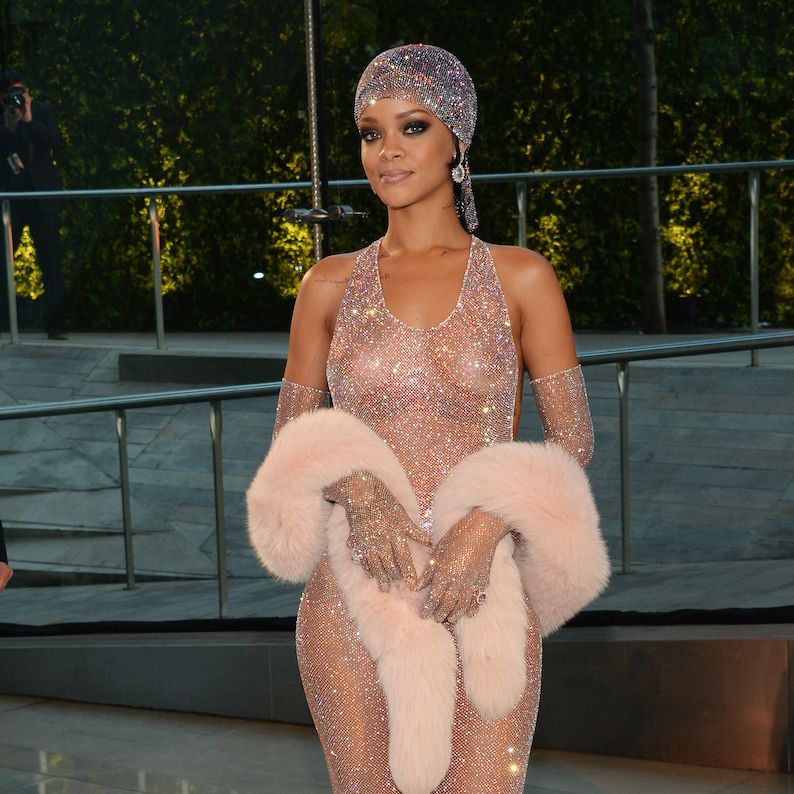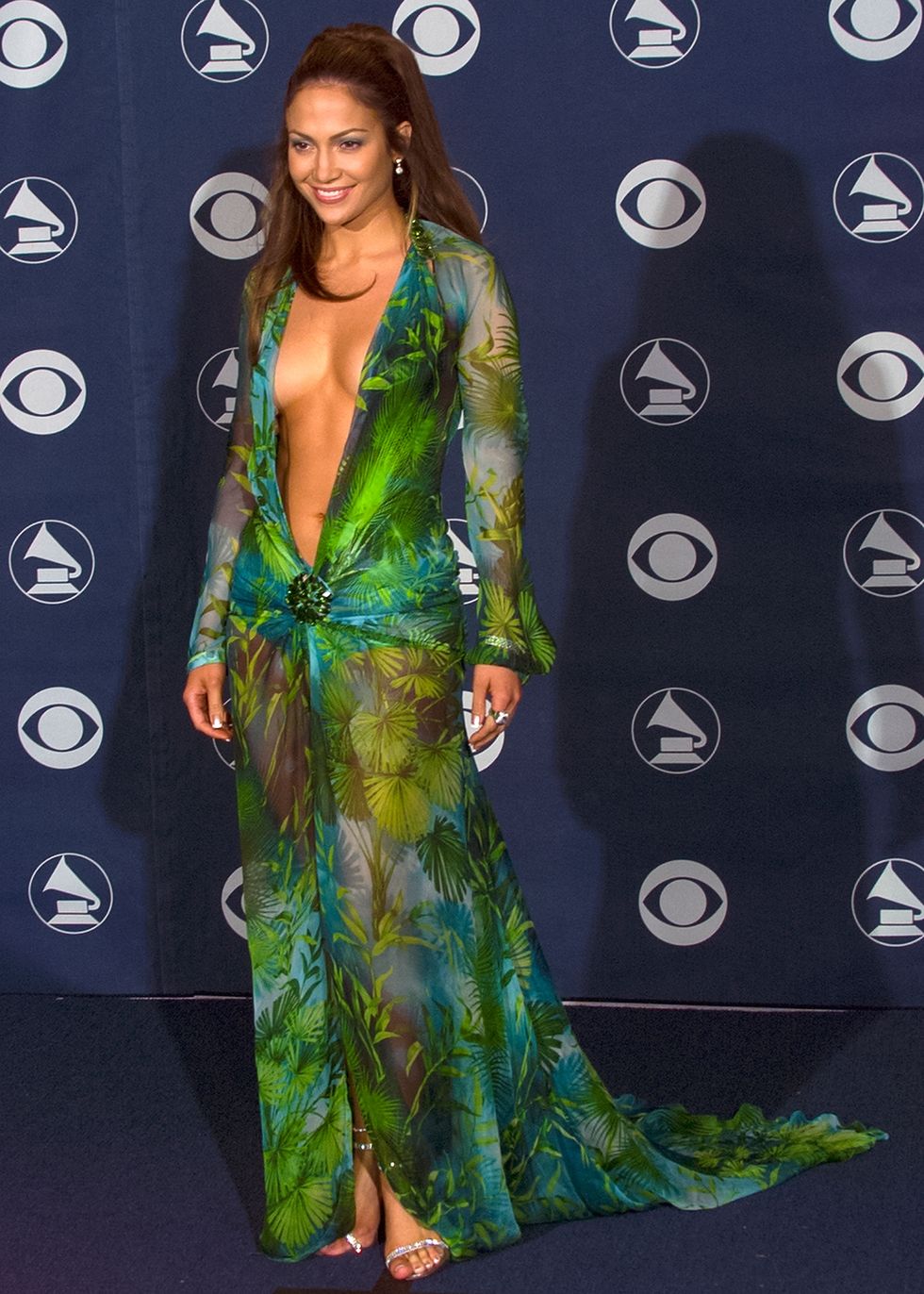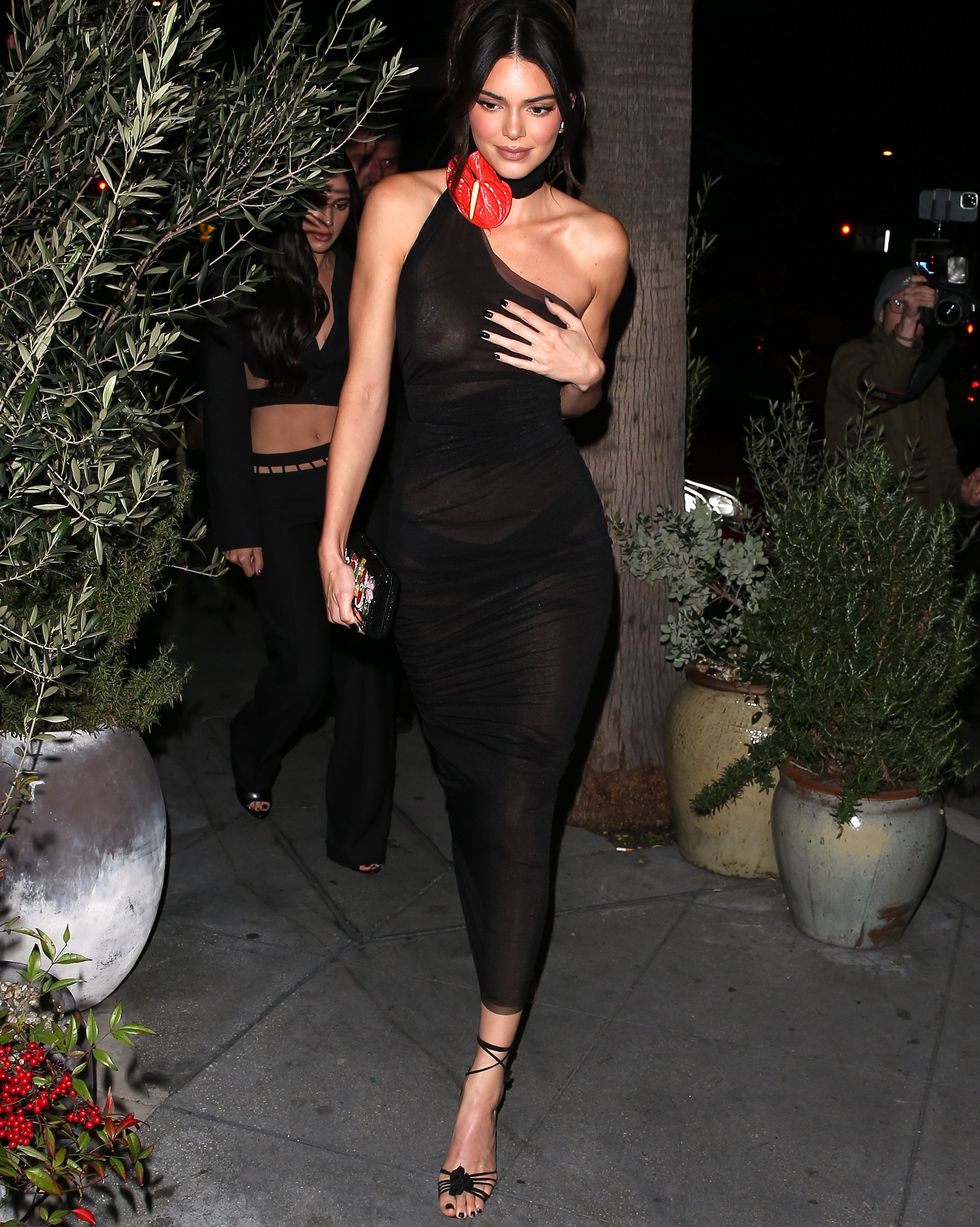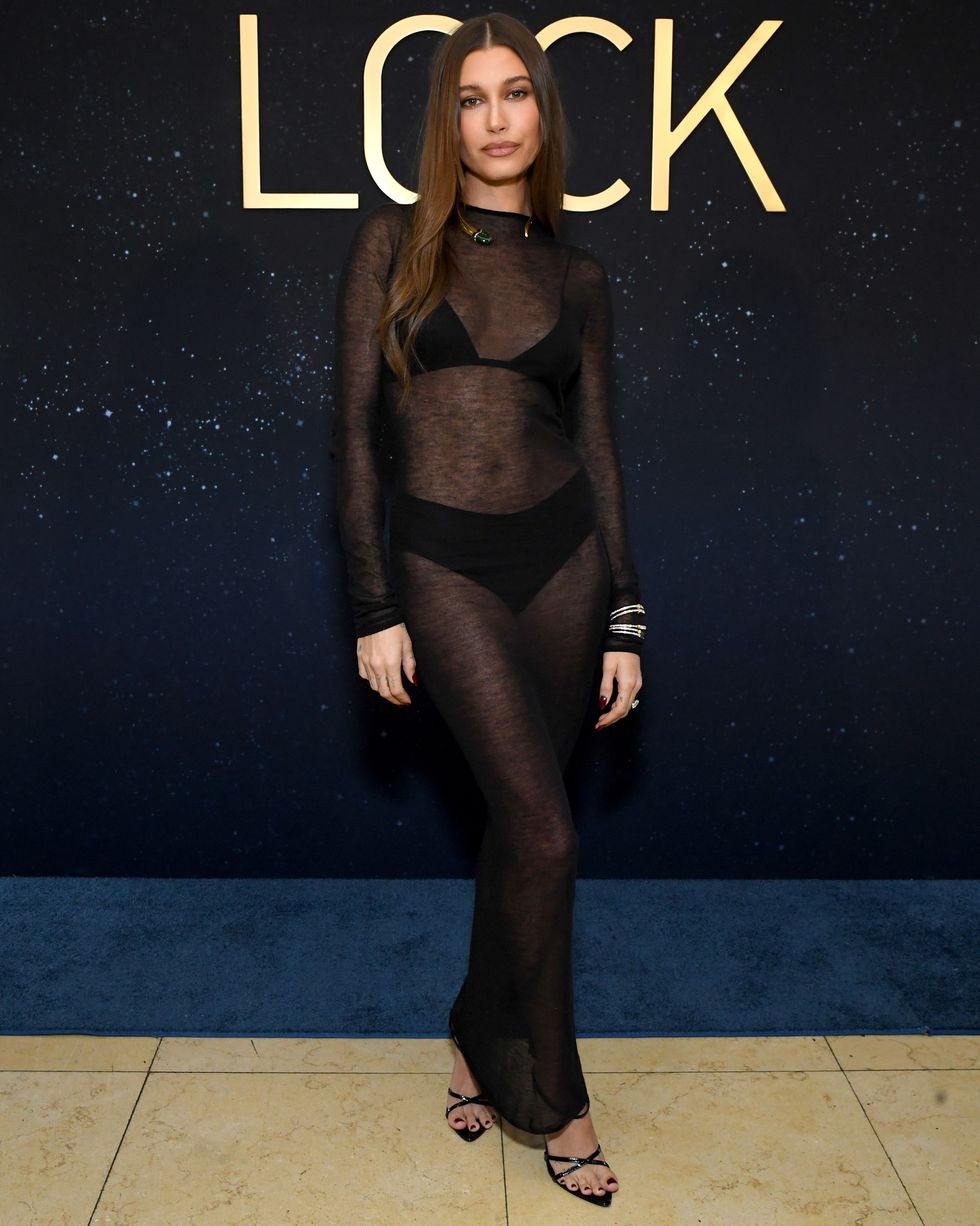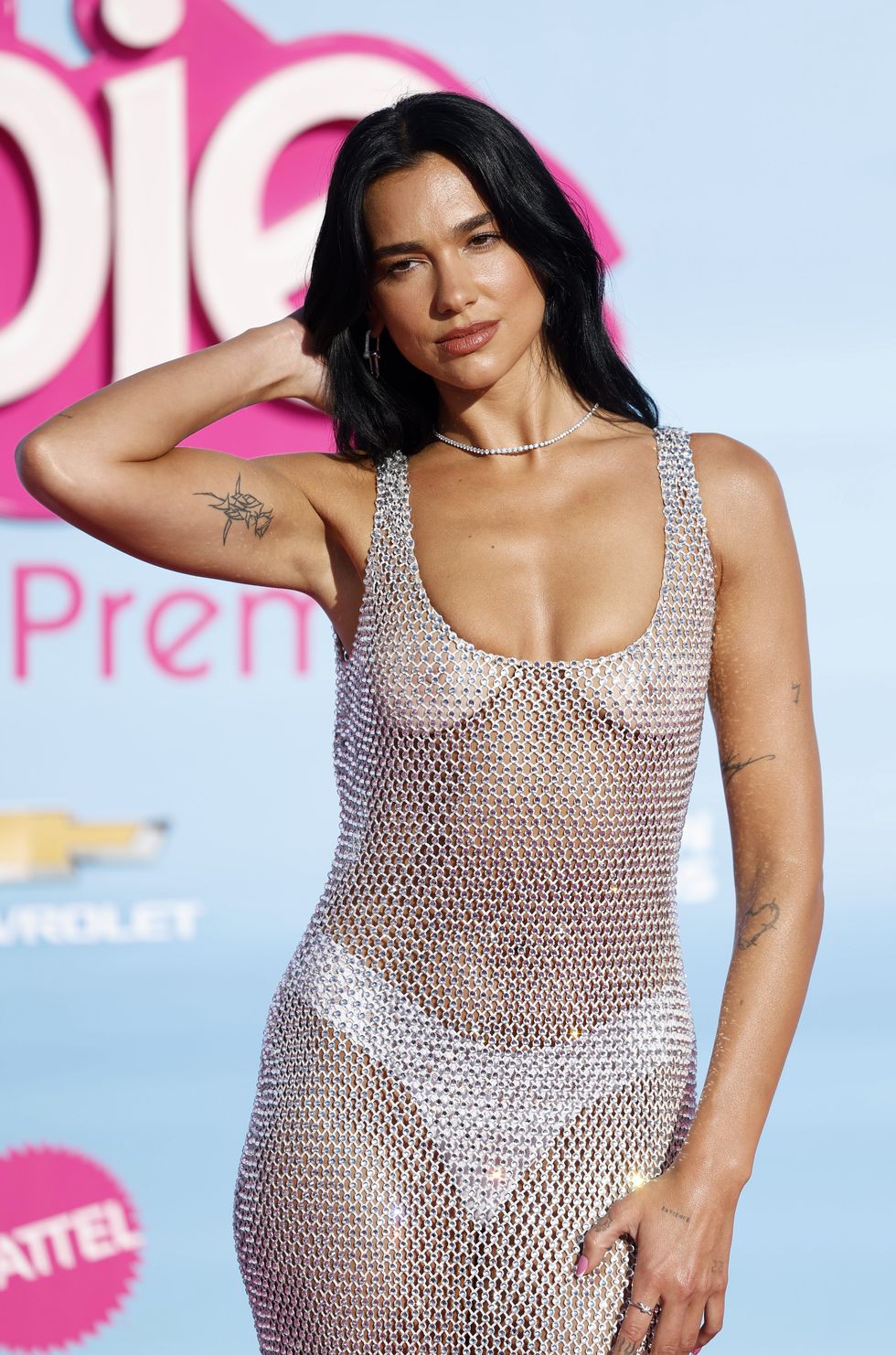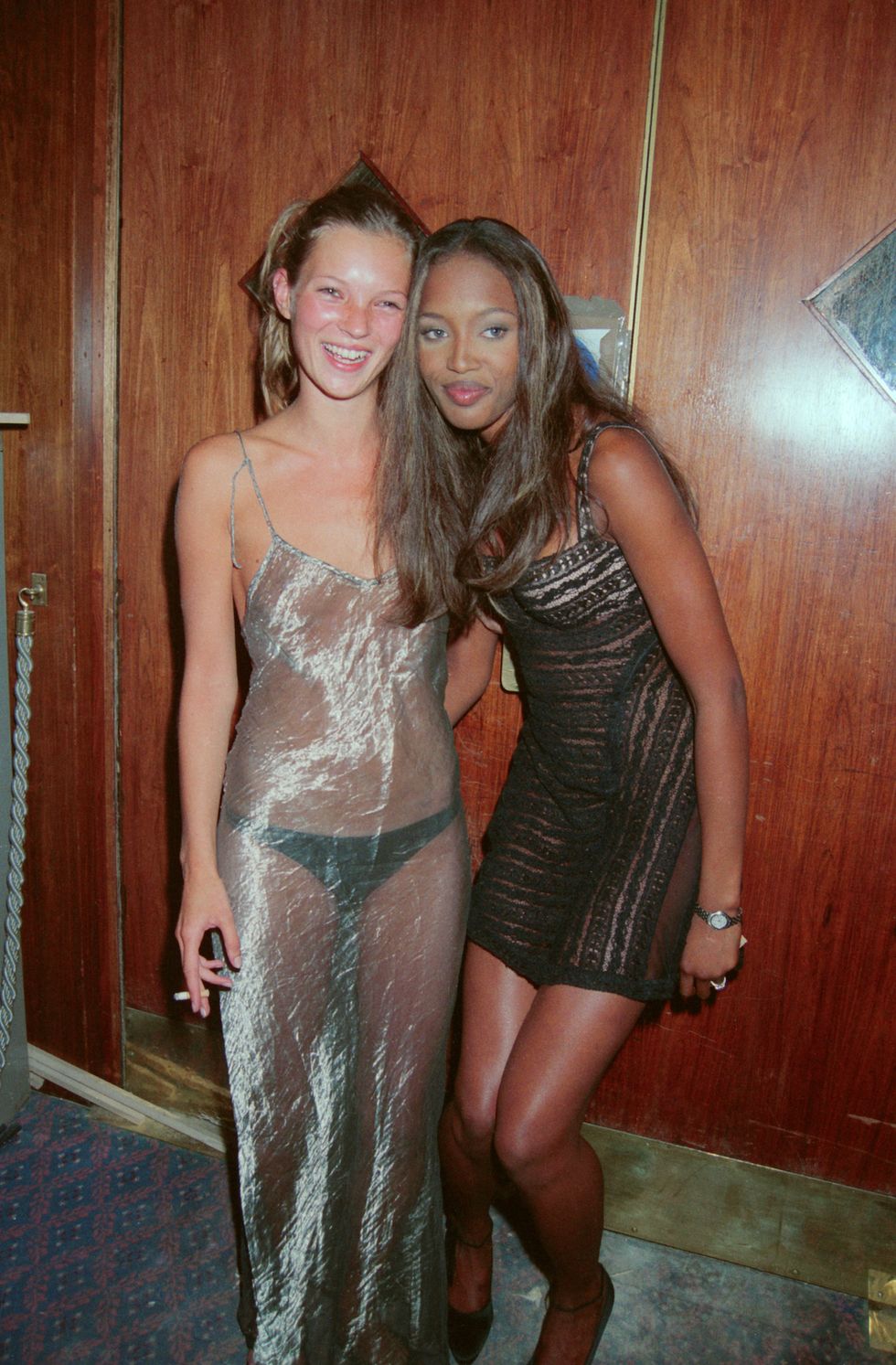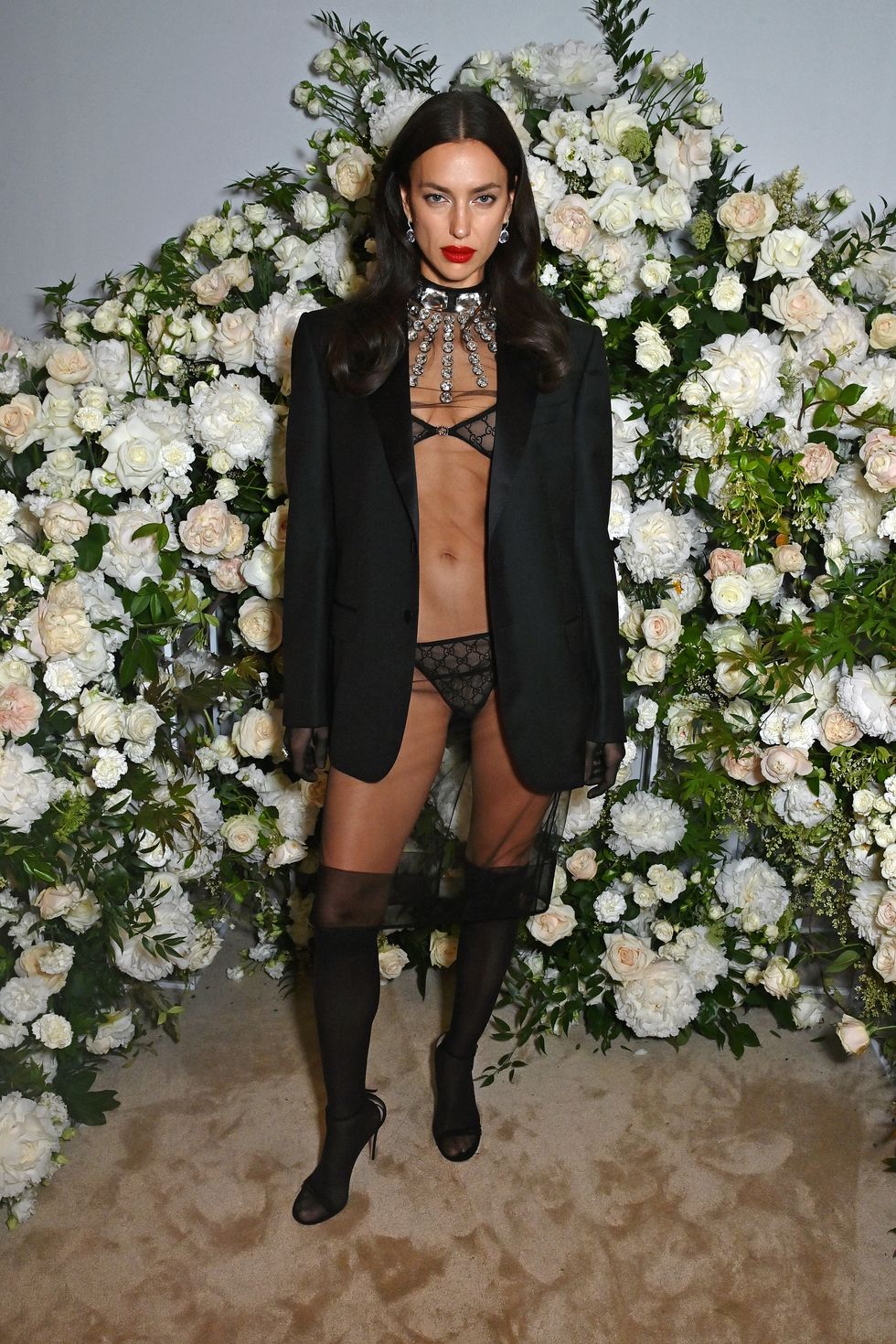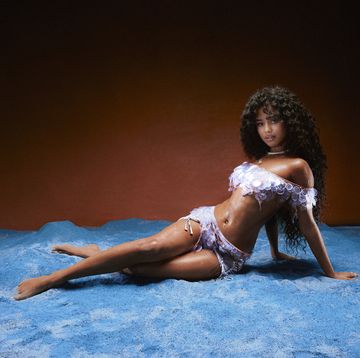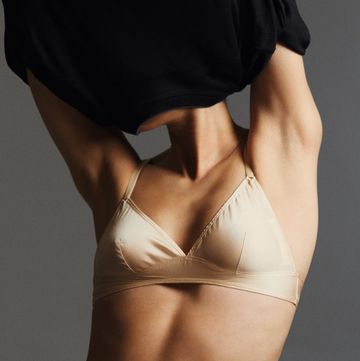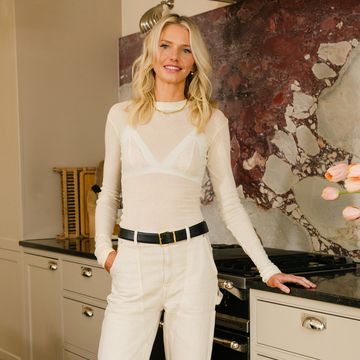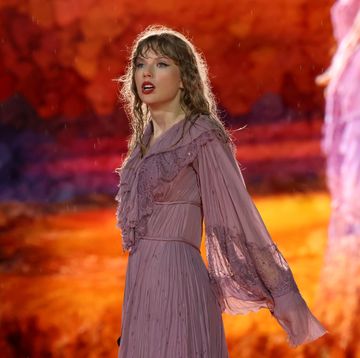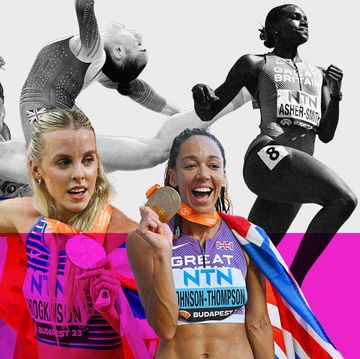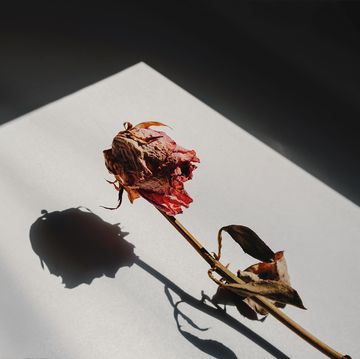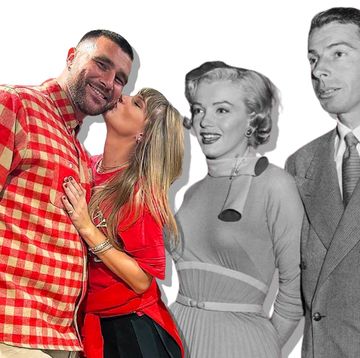Let’s be totally transparent (sorry, I couldn’t help myself), the sheer dress trend is going absolutely nowhere. While fashion’s love in with low denier has certainly boomed in the last six months thanks to the industry’s coolest Jacquemus, Nensi Dojaka, The Attico and Prada all serving iterations of the trend, the sheer dress has been around for decades. While its popularity has wavered (consider Jennifer Lopez at the 2000 Grammy’s peak sheer), its polarising nature has remained resolute.
The catwalks have continued to be awash with sheer, (not just in dress formation, but tops, skirts, shorts and even jackets), and the trickledown effect of the designer proposition has manifested in the high street pumping sheer product out into the world with the same ferocity as a foam machine pumps out bubbles in an 18-30s resort. The effect? The sheer dress trend is not only omnipresent, but it is intense.
The intensity isn’t just from the sheer volume (I’ll stop soon, promise), but its entire proposition. Fundamentally, the sheer dress is an item of clothing that is designed to spotlight the human form. It’s deliberately exposing, it doesn’t shy away from being a statement making piece of clothing – in fact the opposite, it encourages you to make a statement – but, as fashion can be at its core, this trend is also fun, exhilarating and silly for the sake of being a bit silly. However, the conversation sheer has sparked is how inherently divisive who gets to participate in this trend and who doesn’t.
FIND OUT MORE ON ELLE COLLECTIVE
The double standards on women’s bodies have never been more apparent than in the sheer dress trend. Adored by the usual slew of Instagram models including (but certainly not exclusive to) the Kardashians, Hadids and Jenners – this style of dress has been celebrated on their specific body types. Body types that adhere to societies standard of 'beautiful': slim, but hourglass figures in what has been prescribed as the 'right' places, toned, womanly (but crucially not heavy). These are the qualities that are supposedly fit for purpose when it comes to embracing fashion’s most popular trend, and should you shade outside of these lines, well then, the internet will show up and tell you exactly where your body is not welcome.
Take for example Irish singer, CMAT, who didn’t make headlines at the BRIT Awards for being nominated as one of the most exciting newcomer talents, rather her choice to wear a ‘Butt Cleavage’ dress. In an interview with BBC Women’s Hour, the singer explained that she was willing to show as much butt cleavage as she would breast cleavage (seems entirely reasonable), but what she didn’t expect was the overwhelming response to cover up her body. Especially when you consider the likes of Rihanna, who accepted the CFDA fashion icon of the year award in 2014 in a completely transparent Adam Selman creation and was celebrated for it. Sure, there were critics who questioned why the singer's look was necessary, but the overwhelming feeling was that her decision to sheer propelled confidence and empowerment. When Hailey Bieber wore a pink Alexander Wang dress with a built-in thong to the 2019 Met Gala, the double taps reached new highs and the dupes came rolling in without so much as a raised eyebrow.
What is impossible to escape with anything sheer is that it has become simultaneously problematic as it is empowering. In an age where women are supposed to reclaim the conversation around their bodies, and at a time when the fashion industry is supposed to be making strides forward regarding inclusivity and representation, and in a world where we are supposed to be treating each other with kindness, this trend should be thriving.
'It’s funny to me now when I think about all the factors I considered when deciding to wear a sheer dress for my 29th birthday,' explains Lillian Sesiguzel, social media producer. 'First, was my body being on display. I’m a size UK 14 and previously I’d only seen celebrities and influencers who are much smaller than me rock a sheer dress.
'Second, was - again - my body being on display. I’m a 34H and there’s nothing worse than unwanted attention on a night out,' she says. 'Third, quite honestly was how cold I might be in the middle of March! But after I’d contemplated on whether to wear it or not, with some added support from my girls WhatsApp group, I had to remind myself that those factors shouldn’t trump how fabulous I felt in it and how much I loved the dress. I think we forget to separate the trend from the type of body we see it on sometimes, which is easier said than done, but important to challenge.'
In theory the sheer trend should be simple: I like the item, I feel good in it, I’m going to wear it. But there’s a dark cloud looming over its ability to become truly inclusive, and that comes in the shape of glorifying thinness again. Ozempic’s meteoric rise, Kim Kardashian’s shrinking waistline, designers’ want to only hero one kind of body – a thin kind, in case you missed it – means the politicising of bodies is what is thriving. We’ve regressed back to an era where thin is 'in', and there’s no better way to show that off than in a sheer dress.
Sheer dresses should be the gateway to celebrating all kinds of body shapes. In 2024, 'your body your choice' should be the mantra we live by. Fashion should be allowed to make you feel fun, and sexy, and empowered, and feminine, and however you want it to make you feel without the politicising of your body. The irony is not lost on me that the sheer dress is one of the most accessible pieces to buy right now, in terms of breadth of price and options in sizing, and instead of bringing people together in a shared moment, it's highlighting the continued disparity between what kind of body is considered beautiful enough to be exposed, and what kind of body should remain covered up.
ELLE Collective is a new community of fashion, beauty and culture lovers. For access to exclusive content, events, inspiring advice from our Editors and industry experts, as well the opportunity to meet designers, thought-leaders and stylists, become a member today HERE.
